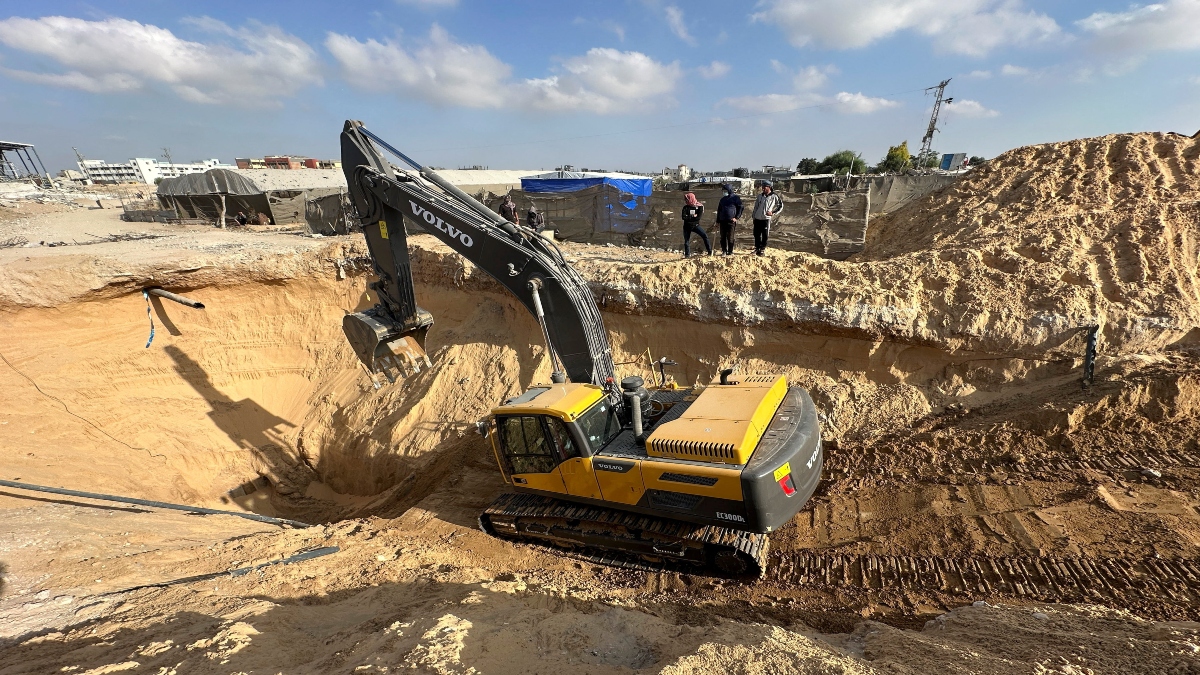The United States military is planning to divide Gaza into a “green zone” and “red zone” as calls for the reconstruction of the coastal enclave start to escalate. According to a report by The Guardian, the US is mulling a plan where Gaza’s “green zone” would be under Israeli and international military control , where reconstruction would start, and a “red zone” would be left in ruins.
According to the American planning documents on the coastal enclave, obtained by The Guardian, foreign forces would initially deploy alongside Israeli soldiers in the east of Gaza, leaving the devastated strip divided by the current Israeli-controlled “yellow line”. “Ideally, you would want to make it all whole, right? But that’s aspirational,” a US official told the British news outlet on the condition of anonymity. “It’s going to take some time. It’s not going to be easy.”
While the US argue that its plan is realistic, it raises serious questions about Washington’s commitment to turning the ceasefire announced last month into an enduring political settlement with Palestinian rule across the region, which US President Donald Trump initially promised.
For weeks, plans for Gaza’s reconstruction have been shifting considerably. Initially, the US promoted reconstruction in the form of fenced-in camps for small groups of Palestinians, referred to as “alternative safe communities” (ASC). However, the US official told The Guardian that those plans were dropped this week. “That’s a snapshot of a concept that was put forth at a certain time,” the US official said. “They’ve already moved on from that.”
The creation of ISF remains a concern
It is pertinent to note that the creation of an international stabilisation force (ISF) underpins Trump’s 20-point “peace plan” . The US has been hoping to draft a UN Security Council resolution giving the force a formal mandate, which is likely to pass next week and would entail details on troop commitments.
“The first step is we have to get the [resolution],” the US official said. “Countries are not going to make firm commitments until they actually see the language that has been passed.” However, Trump himself has ruled out putting any US soldiers on Gaza soil to ensure the withdrawal of the Israeli forces from the enclave and to start the reconstruction process.
Quick Reads
View AllEarlier this month, the US military regional Centcom command drew up plans to put European forces – including hundreds of British, French and German soldiers – at the core of the ISF, documents seen by the Guardian indicate. The US also wanted troops from Germany, the Netherlands and Nordic countries to handle field hospitals, logistics and intelligence.
However, European players have been describing the plans as “delusional”. After long missions in Iraq and Afghanistan, very few European leaders would be willing to risk their soldiers’ lives in Gaza. Although initially these nations have pledged their support to Trump’s peace plan and offered a certain amount of troop deployment.
What Gaza reconstruction would entail
As per the documents, US military planners see reconstruction inside the “green zone” as part of a nebulous path to reuniting Gaza by convincing Palestinian civilians to move across the line of Israeli control.
“As things progress and you create conditions for there to be significant progress on reconstruction, you [will] have Gazan civilians moving there beginning to thrive,” the US official told The Guardian. “People will say, ‘Hey, we want that’, and so it evolves in that direction. No one’s talking about a military operation to force it.”
However, making “green zones” in Gaza risks drawing comparison with Iraq and Afghanistan , where the phrase became synonymous with US military failures. When it comes to Baghdad and Kabul, the green zones were enclaves ringed by concrete blast barriers where western forces and their local allies retreated to escape the violence their mission had unleashed in the communities around them.
It is important to note that Trump’s 20-point plan commits to the demilitarisation of Palestinian factions in Gaza and an eventual Israeli withdrawal to a “security perimeter” carved out of Palestinian land . All this would be facilitated by the ISF and allow rebuilding to begin “for the benefit of [Gaza’s] people”. Activists argue that the need for reconstruction is urgent since more than 80 per cent of structures in Gaza have been damaged and destroyed in the war, including almost all schools and hospitals in the region.
)